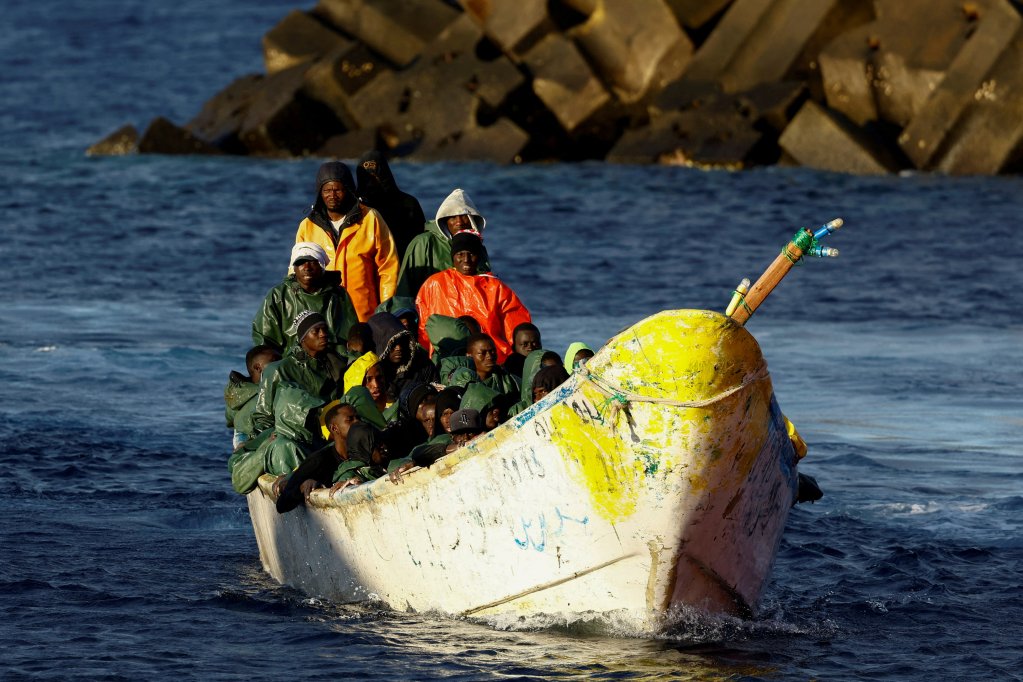Fifty-five people died at the weekend in which emergency services rescued almost 2,000 people in over 30 separate operations, mainly in the waters near the islands of Lanzarote and El Hierro.
The first weekend of November has been one of the most challenging for maritime rescue teams in the Canary Islands, with at least 55 fatalities and nearly 2,000 people assisted, RTVC reported.
Since Friday (November 1) 329 minors have arrived in the Canary Islands, and of the 1,949 individuals who have been rescued, 969 were on 20 inflatable boats and small craft, and 156 were on three Zodiacs -- small inflatable speedboats. The latter were disembarked in Fuerteventura due to the saturation of available resources in Arrecife, according to Spanish news agency EFE.
Additionally, eight cayucos with 752 people were assisted in El Hierro, and a vessel with 72 occupants was helped at the Port of Los Cristianos in southern Tenerife.
Read AlsoCanary Islands: Four people rescued after days on ship's rudder
Hundreds of arrivals over the weekend
Late Friday, Canarias7 reported that the Guardamar Talia rescued 62 migrants from a cayuco 11 miles off El Hierro, including five women and a minor, and brought them to La Restinga. The Guardamar Urania located a dinghy 15 kilometers off Lanzarote, with 42 migrants, including five women and two children.
After midnight, the Guardamar Talia rescued another cayuco with 47 migrants, including four women and five minors, and transferred them to La Restinga. Later, the Guardamar Urania rescued a dinghy carrying 54 North African migrants, including four women, near Lanzarote and transported them to Arrecife.
The next morning, four new boats carrying 315 migrants arrived on Lanzarote and El Hierro. Early on Saturday, the Guardamar Urania rescue ship rescued a boat with 59 people, including four women and a minor, off Lanzarote and transferred them to Arrecife.
Later, the same vessel rescued 106 people in two small boats, and shortly after, the Salvamar Al Nair saved another 50 people in an inflatable. By mid-morning, a cayuco with about 100 migrants was sighted 12 miles off El Hierro, and the Salvamar Adhara transported them to the port of La Restinga.
Read AlsoSenegal intercepts nearly 600 irregular migrants in 10 days
55 dead and dozens rescued
On Sunday afternoon, five bodies were found after a punctured inflatable boat was spotted 90 kilometers northeast of Lanzarote, Spanish Sea Rescue services told Reuters.
A spokesperson said that a rescue aircraft had sighted two inflatable boats heading towards the archipelago, noting one had a deflated float. The aircraft launched two life rafts and rescued 17 people from one boat and 80 from another, but five bodies were also found in the water nearby.
In another operation, the Guardamar Concepción Arenal picked up a woman's body after she fell from a deflating boat, rescuing two others from the water and 54 remaining passengers.
A cayuco adrift 370 kilometers south of El Hierro, carrying 58 people, was the deadliest incident in a tragic three-day period along the Canary migration route. The merchant ship Patria found the vessel on Saturday and alerted Salvamento Marítimo, which rescued the last ten survivors. The remaining 48 migrants had died during the three-week journey from northern Mauritania, with their bodies reportedly thrown overboard.
Additionally, a migrant who arrived Saturday on El Hierro in a cayuco carrying 180 people died on Sunday at the island’s hospital due to complications from the journey. The weekend's largest single rescue took place at 4 pm on Sunday when the Salvamar Mizar brought in a cayuco with 207 people, including ten women and 19 minors, at La Restinga.
Read AlsoMore migrant deaths in Spanish waters, as arrivals continue

Rise in crossings due to mild weather
Of those rescued, nearly one in six (16.8 percent) are minors. Additionally, the total includes 225 women, accounting for 11.5 percent of all survivors.
Calm seas and gentle winds associated with late summer in the Atlantic Ocean off West Africa have prompted a large number of migrants to make the dangerous journey. Many migrants are trying to escape extreme poverty and political instability in Africa's Sahel region, as well as economic woes in countries like Senegal which has become a major departure point.
The Atlantic route to the Canary Islands has seen the fastest growth in irregular migration in recent years, despite the dangers of strong currents and unpredictable weather. However, numbers remain below those on the Central Mediterranean route towards Italy.
Some 32,878 migrants have taken the route in boats from West Africa to the Canary Islands between January and October 15, according to government figures, a rise of 39.7 percent from the same period last year.
Read AlsoSpanish government promises 100 million euros to support unaccompanied minors
With Reuters
